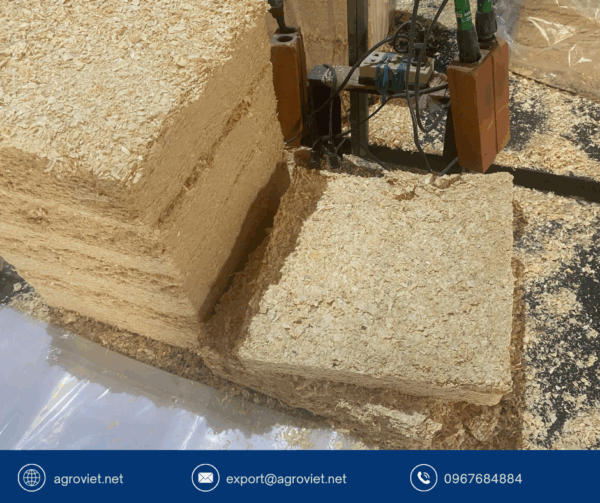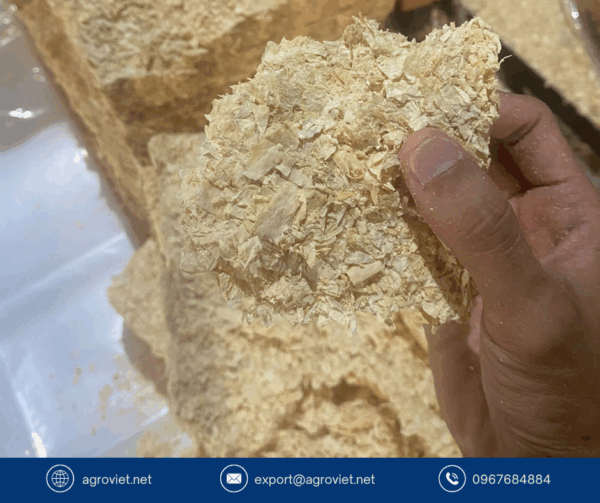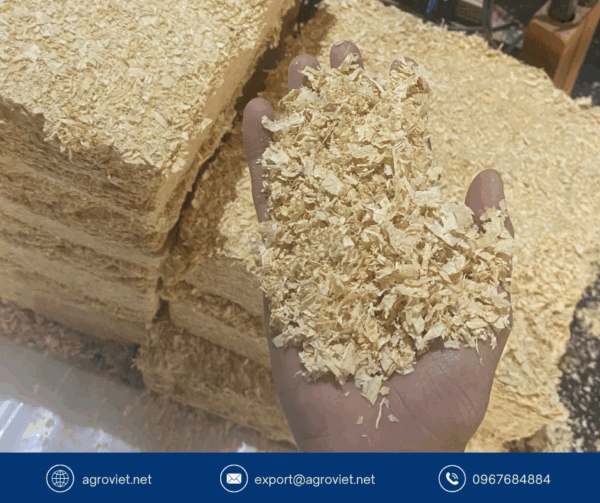Healthy Animals Need Fewer Drugs – Why Bedding Quality Matters More Than You Think

Introduction to Bedding Quality and Animal Health
Livestock diseases like mastitis, hoof rot, and pneumonia increase reliance on costly drug treatments, with wet or soiled bedding playing a significant role by fostering pathogens such as Escherichia coli and Fusobacterium necrophorum. Poor bedding raises infection rates by 25–35%, leading to 5–10% herd mortality and frequent antibiotic use. High-quality, kiln-dried wood shavings maintain a dry, hygienic environment, reducing drug treatments by 25–40% and promoting animal health, as supported by the MSD Veterinary Manual. This post evaluates the cost comparison between wood shavings and drug treatments, highlighting how wood shavings cut veterinary expenses, reduce antibiotic reliance, and boost farm profitability.
Watch this: https://www.fao.org/animal-health/resources/videos/why-protecting-animal-health-is-protecting-the-health-of-our-planet/en
The Problem with Poor Bedding and Animals’ Health
Wet bedding, such as straw ($50–$100 per ton) or low-quality sawdust ($80–$150 per ton), retains moisture and manure, creating a pathogen-rich environment with bacterial loads of 10^6–10^8 CFU/g, per the MSD Veterinary Manual. This drives diseases like mastitis (20–30% incidence in dairy cows), hoof rot (15–25% in calves), and pneumonia (15–30% in young stock), necessitating frequent drug treatments. Straw requires replacement every 1–2 weeks, costing $1,200–$3,600 annually for a 100-animal herd, plus $50–$100 weekly in labor. These costs, combined with drug expenses, make cheap bedding a financial burden.
Health Risks and Drug Dependency
Poor bedding increases health risks and antibiotic use. Mastitis, caused by E. coli or Streptococcus uberis, leads to 5–10% mortality in severe cases, per the MSD Veterinary Manual. Hoof rot, driven by Fusobacterium necrophorum, affects 15–25% of calves, with 5–15% mortality or culling. Pneumonia, linked to Pasteurella multocida, impacts 15–30% of young stock, with 5–10% mortality. Wet bedding sustains these risks, requiring 25–40% more antibiotic treatments (e.g., ceftiofur or tulathromycin, $20–$100 per dose) than dry conditions. High drug use also raises concerns about antibiotic resistance and regulatory compliance, increasing long-term costs.
Economic Impact of Poor Bedding and Drug Use
Poor bedding drives significant financial losses through disease and drug costs. For a 100-cow dairy herd, mastitis costs $6,000–$9,000 annually, including $2,000–$3,000 in antibiotics and $4,000–$6,000 in yield losses, per LLM Farm Vets. A 100-calf operation faces $2,000–$6,000 for hoof rot and pneumonia, with $1,000–$3,000 in antibiotics. A 1,000-bird poultry flock loses $5,000–$15,000 per coccidiosis outbreak, with $2,000–$5,000 in drug costs (e.g., amprolium, $10–$50 per bird). Culling ($500–$2,000 per animal) and bedding replacement ($1,200–$3,600 annually) push total losses to $10,000–$20,000 for a 100-animal herd, with drugs accounting for 20–30% of expenses.
How Poor Bedding Increases Drug Dependency
Wet bedding sustains moisture levels of 30–50%, fostering pathogens like E. coli, Fusobacterium necrophorum, and Pasteurella multocida, increasing disease incidence by 25–35%. Ammonia from decomposing manure (25–50 ppm) irritates skin, udders, and respiratory tissues, facilitating infections that require antibiotics. The MSD Veterinary Manual notes that wet litter attracts flies, spreading secondary infections like flystrike, affecting 10–20% of animals. In wet barns, 50–60% of animals require drug treatments, compared to 35–45% in dry conditions, driving up costs and antibiotic use, which can lead to resistance and regulatory penalties.
The Solution: Kiln-Dried Wood Shavings For Better Health
Kiln-dried wood shavings, sourced from softwoods like pine, reduce drug treatments by 25–40% by maintaining litter moisture below 20%. Their absorbency (up to 200% of weight) inhibits pathogens by 20–30%, while kiln-drying eliminates microbial contamination. The MSD Veterinary Manual confirms that dry bedding reduces disease rates to 10–15 cases per 100 animals, compared to 20–30 cases with wet litter. Wood shavings lower mastitis incidence (from 20–30% to 14–21%), hoof rot (from 15–25% to 10–18%), and pneumonia (from 15–30% to 10–20%), reducing antibiotic use and saving 3–7 animals per 100 annually.

Cost Comparison: Wood Shavings vs. Drug Treatments
Kiln-dried wood shavings cost $150–$250 per 1-ton pallet, lasting 2–3 months for a 10-animal pen, or $600–$1,000 annually for a 100-animal herd ($0.07–$0.10 per head daily). Straw costs $1,200–$3,600 annually due to weekly replacements. Antibiotic treatments for mastitis, hoof rot, and pneumonia (e.g., ceftiofur, $20–$100 per dose; tulathromycin, $20–$100; amprolium for poultry, $10–$50) cost $2,000–$5,000 annually for a 100-animal herd (50–60 cases). Wood shavings reduce drug treatments by 25–40%, cutting costs to $1,200–$3,500 and saving $800–$2,000. Reduced mortality (from 10% to 3–7%) saves $300–$1,400 at $100–$200 per animal, while improved yields add $5,000–$12,000 annually, per The Bullvine. Total savings reach $6,100–$15,400, yielding an ROI of 600–1,500%, as supported by the University of Maine Cooperative Extension.
Promoting Herd Health with Wood Shavings
Wood shavings strengthen herds by reducing disease incidence and antibiotic reliance. Their absorbency minimizes moisture, inhibiting E. coli, Fusobacterium necrophorum, and Pasteurella multocida. The soft surface reduces stress, boosting immunity by 10–15%. Farms using wood shavings report 25–40% fewer drug treatments, with mastitis cases dropping to 14–21 per 100 cows, hoof rot to 10–18 per 100 calves, and pneumonia to 10–20 per 100 young stock. The MSD Veterinary Manual highlights that dry bedding reduces pathogen loads, improving milk yield by 8–12% and growth rates by 10–15%, ensuring healthier herds with fewer drug interventions.
Cost-Benefit Analysis
For a 100-animal herd, poor bedding leads to $10,000–$20,000 in annual losses, including $2,000–$5,000 in drug treatments, $1,000–$2,000 in mortality (5–10%), and $4,000–$10,000 in productivity losses. Wood shavings, costing $600–$1,000 annually, reduce drug treatments by 25–40%, saving $800–$2,000, and lower mortality by 15%, saving $300–$1,400. Productivity gains add $2,800–$7,000, totaling $3,900–$10,400 in savings. Reduced culling saves $500–$2,000 per animal, and lower bedding costs save $600–$2,600 annually, enhancing profitability.
Long-Term Economic Benefits
Wood shavings provide lasting benefits by reducing disease recurrence and improving herd performance. Dry bedding minimizes reinfection, supporting immunity and cutting antibiotic use by 25–40%. Farms report 8–12% higher yields, adding $5,000–$12,000 annually for a 100-animal herd, per The Bullvine. Reduced antibiotic costs save $8–$10 per animal annually and align with regulations, avoiding penalties. Lower mortality (from 10% to 3–7%) and culling save $500–$2,000 per animal, compounding savings over time, as per the University of Maine Cooperative Extension.
Practical Tips for Bedding Management
Spread 3–5 bags (40 lbs each) of wood shavings per 10×10 pen, topping up with 1–2 bags weekly to maintain absorbency. Daily cleaning removes soiled litter, preventing pathogen buildup, as recommended by the MSD Veterinary Manual. Ventilation providing 6–8 air changes per hour maintains dryness, while storing shavings in a dry area prevents mold. Sourcing from reputable suppliers ensures low-dust, non-toxic shavings, optimizing health benefits and reducing labor costs.
Complementary Prevention Strategies For Animals’ Healt
Beyond bedding, vaccinations (e.g., Startvac for mastitis, $5–$10 per cow; clostridial vaccines, $5–$10 per calf) reduce disease risk. Regular health checks, including SCC testing ($50–$200) or respiratory diagnostics, detect issues early, saving $100–$500 per animal. Sanitizing equipment and providing balanced nutrition boost immunity, while footbaths ($10–$50 per cycle) prevent hoof rot. These measures, combined with wood shavings, minimize drug use and enhance herd health.
Welfare and Regulatory Benefits
Wood shavings enhance herd welfare by reducing disease-related pain and stress, aligning with ethical farming standards. A 25–40% reduction in drug treatments supports sustainable production, meeting consumer demand and avoiding regulatory penalties. The MSD Veterinary Manual emphasizes that hygienic bedding is critical for herd health, improving market competitiveness. Reduced culling saves $500–$2,000 per animal, enhancing farm reputation.
Addressing Bedding Management Challenges
Wood shavings cost more upfront ($150–$250 per ton) than straw ($50–$100), but their durability reduces replacement frequency, saving $600–$2,600 annually for a 100-animal herd. Daily cleaning and proper storage prevent mold, ensuring hygiene. Reputable suppliers provide high-quality shavings, minimizing dust and toxins. These practices make wood shavings a practical, cost-effective solution for reducing drug use.
Conclusion
Poor bedding drives mastitis, hoof rot, and pneumonia, causing 5–10% herd mortality and $10,000–$20,000 in annual losses for a 100-animal operation, with drug treatments costing $2,000–$5,000. Kiln-dried wood shavings, at $600–$1,000 annually, reduce drug treatments by 25–40%, saving $800–$2,000, and lower mortality by 15%, saving $300–$1,400. Supported by the MSD Veterinary Manual, wood shavings create a dry, hygienic environment, boosting immunity and yields by 8–12%. Total savings of $3,900–$10,400 and an ROI of 600–1,500% make wood shavings a smart investment. By adopting clean bedding and complementary strategies, farmers can reduce drug dependency, strengthen herds, and achieve sustainable, profitable operations.
